Painting Irish History; the Famine
Published in 18th–19th - Century History, Features, Issue 3 (Autumn 1996), The Famine, Volume 4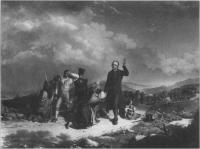
Fig.1. An Ejectment in Ireland or A Tear And a Prayer for Erin(1847) by R.B Kelly. (Private Collection)
We are currently marking the hundred-and-fiftieth anniversary of the single most catastrophic event in the history of nineteenth-century Europe, the Irish Famine of 1845-50. Yet commemorations of the disaster are hampered by a dearth of visual material. It is a problem which applies to Irish history in general before 1900 and one which has been remarked upon but not explained by art historians. On the face of it, the Famine probably received more attention from contemporary artists than any other Irish historical event up to the nineteenth century. Most people are aware of the graphic representations of famine-ridden Ireland in the Illustrated London News and similar periodicals of the time, but, given nineteenth-century artists’ preoccupation with history and social realism, the lack of painted and sculpted images raises questions which must be answered.
Poor people looking healthy
A feature of the graphic illustrations is the discrepancy between the verbal descriptions of the starving Irish and the visual images. The people look poor but they remain remarkably healthy. This was largely due to art practice and art education at the time. Artists were given rigorous training in the drawing of body parts based on athletic-looking Greek and Roman sculptural models or using a live model. The emphasis was always on the idealisation and ennoblement of the human figure, juxtaposing the best parts to arrive at a perfect whole. It was very difficult for the artist to abandon this training and the authority which tradition conferred on him, even in the interests of accuracy. Natural delicacy may also have prevented the artist from painting the indignity of death from famine but this instinct would also have been accompanied in some artists by a desire to show their countrymen in the least unflattering light possible. Just a few years earlier, in The Nation, Thomas Davis had called on the artist to paint Irish subjects but added the warning that as ‘he had about him a people indifferently made, ordinary, not very clean nor picturesquely clad’ he had better study the human figure from antique busts.
Thomas Davis was saddened by the absence of Irish historical painting and in the first issue of The Nation in 1842 called on artists to rectify this, going on, in subsequent issues, to list possible subjects for them. But Davis’s pleas fell on very deaf ears if we are to judge by the evidence of the Royal Hibernian Academy’s exhibition catalogues for the following decade. Of the hundreds of works shown each year only about a dozen titles correspond to Davis’s list and fewer still indicate any reference to the widespread experience of famine.
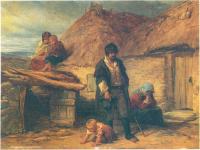
Fig.2. An Irish Eviction(1850) by Frederick Goodall
(Leicester Museum and Art Gallery)
Failure to confront history
The failure of artists to confront Irish history continued with some notable exceptions up to the end of the century. When Sir Thomas Grattan Esmonde unveiled Oliver Sheppard’s statue to ‘98 in Wexford in 1898 he complained that ‘the monuments commemorative of great Irishmen, of great events in Irish history are few and far between’. Esmonde and Davis bemoaned this omission for social reasons, there was no visual encouragement for patriotism or for national self-esteem. But for artists the problem was even more damaging. Up to the last decades of the nineteenth century the highest accolades in the visual arts were still reserved for painters and sculptors of historical subjects. The absence of history painting in this country was tantamount to a declaration of failure, for which no amount of accomplished portraiture or landscapes could compensate. Were Irish artists so lacking in ambition that they could afford to ignore the genre most likely to attract public attention?
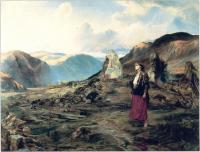
Fig.3. Evicted by Lady Elizabeth Butler(1890)
(Department of Irish Folklore, University College Dublin)
Not acceptable to the establishment
Connoisseurial scholarship, concerned as it is mainly with issues of style and authorship, has not given much attention to this, assuming scarcity of talent and allowing the omission to reinforce the cliché of visual illiteracy instead. The story is far more complex than the cliché suggests. Irish artists did not paint their history because of a perception (so widely held that it was not always documented) that such work would not be acceptable to the establishment. This belief, not new in nineteenth-century Ireland was reinforced by the experience of the Ordnance Memoir, a subsection of Larcom’s Ordnance Survey or Ireland. The Memoir, which included such scholars and topographical artists as O’Curry, O’Donovan, Petrie, Wakeman and O’Connor,. recorded the country’s ancient monuments, buildings and sculptures and related their finds to Gaelic literature and folklore. Their work was held in high esteem by most sections of Irish society but government funding was withheld after publication of the first volume of material. The Memoir was closed by Thomas Spring Rice, Chancellor of the Exchequer, in July 1840. But, amid a blaze of public support, Petrie and his friends continued their topographical research. In 1843 a resolution backed by the Royal Irish Academy called on the government to reinstate the Memoir. Prime Minister Peel set up a commission to decide the issue but despite its strong recommendation in favour of continuation the Memoir was closed down. Expense was cited as the reason but in the public perception in Ireland there was a different motive. The Evening Mail of 8 March 1843 attributed closure to ‘some remnant of the old exploded policy of depressing local recollections among the Irish lingering in the cabinet’. The Freeman’s Journal agreed three days later, pointing out that the total cost of the survey was £10,000 less than that spent on the Queen’s dog kennels in one year. Most commentators in the Irish press agreed with The Nation that the Memoir would ‘put into every Irishman’s hands a full account of the shape and productions of his parish, his country and his island. It would nationalise the country’. The consequences of this were spelled out in an anonymous letter, signed ‘Protestant Conservative’ in May 1842:
We find persons sent from this office [Petrie’s] engaged in taking the pedigree of some beggar or tinker and establishing him the lineal descendant of some Irish chief, whose ancient estate they most carefully mark out and they have actually, in several instances, as I have seen by their letters, nominated some desperate characters as the rightful heirs to these territories.
The message of the Ordnance Memoir’s experience was clear: that the codification of ancient art works did wonders for national esteem but in a colonial situation that was not likely to be popular with government.
Brigadier V.R.I. Doyle, brother of Richard (Dicky) Doyle, the well known Victorian illustrator and cartoonist believed that Irish history could not be celebrated until the Act of Union of 1801 was repealed. Among papers found after his death was a drawing of a Celtic cross accompanied by the following words, ‘When Ireland regains her parliament I hope and believe her first act would be to create a monument to Lord Edward Fitzgerald who was cruelly murdered by the police in 1798 while gallantly struggling for his people’s emancipation. The above is suggested’
Doyle may have been right. Certainly the experience of R.G. Kelly, an Irish artist who exhibited a painting of an eviction scene at the British Institution in 1853 would seem to bear this out. Strickland, in his Dictionary of Irish Artists, records that the painting, ‘An Ejectment in Ireland’ or ‘A Tear And a Prayer for Erin’ (fig.1), was ‘much criticised as a political picture, which the artist never intended, and was actually discussed in the House of Commons’. Kelly got the message and appears to have avoided such subjects for the remainder of his career.
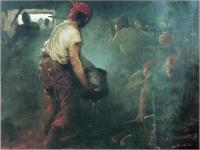
Fig.4. Eviction Scene Henry Jones Thaddeus (1889)
(Private Collection)
Politicisation of poverty
The problem was not the depiction of poverty (after all this was a popular genre in England with such artists as Fildes and Watts, and in France with Millais and Breton) but rather the politicisation of that poverty in a colonised country. Depictions of Irish poverty by English and Scottish artists seem not to have attracted the same reaction as Kelly’s and some of the best known images of the Famine and the related issues of eviction and emigration were painted by G.F. Watts and Frederick Goodall (fig.2), who were English. Erskine Nicol (fig.3), the Scottish painter, executed a great many pictures of these subjects, often but not always, caricaturing his Irish victims. On the other hand those Irish artists such as James O’Mahoney and Aloysius O’Kelly, who provided the London press with graphic images of rural hardship, avoided these subjects in their paintings.
One of the few people who did tackle the subject of eviction was the well-known battle painter Lady Elizabeth Butler. Her popularity was such that she almost succeeded in becoming the first female artist to be admitted to the Royal Academy, yet even her established reputation could not save her from the wilful misinterpretation of her painting ‘Evicted’ (fig.4) offered by Lord Salisbury, Tory Prime Minister. In 1890 in a speech at the annual opening banquet of the Royal Academy he referred to it, saying, ‘There is such an air of breezy cheerfulness and beauty about the landscape which is painted that it makes me long to take part in an eviction myself either in an active or a passive sense’. The subject of eviction was given even more striking treatment by Henry Jones Thaddeus at the Royal Hibernian Academy in 1889 (cover). The painting is Caravaggesque in its immediacy, its dramatic lighting and composition and its identification with the low-life figures seen from within their beleaguered home. Yet Henry Jones Thaddeus too abandoned such subjects, opting for a tamer career as a portraitist and court painter.
Why did artists of the calibre of Mahoney, O’Kelly and Thaddeus turn away from subject matter in which they had already invested considerable creative energy and which led, at least one of them, Thaddeus, to produce his best painting? The answer almost certainly lies in the artist’s dependence on the art market. For most Irish artists of the last century any obvious identification with Ireland made success, especially in London, problematic, and the picture-buying public at home was too small and too provincial for artists with ambition. James George O’Brien found it necessary to change his surname to Oben when he went to London in 1798. William Mulready (1786-1863) played down his Irishness and abandoned his Catholic faith for Anglicanism in the process of securing a lucrative and fashionable career as a genre painter. Yet despite this, even Mulready was lampooned as ‘Moll Roony’ and criticised for his popery in the English press when his postal envelope designs were publicised in 1840.
To be Irish was to be seen as dirty, uneducated and incapable of the loftier achievements of civilised society. The Freeman’s Journal of 3 November 1853 records the speech of Lord Ward, an English aristocrat, at the Great Exhibition banquet in Dublin. Lord Ward openly admitted that he had expected to find in the Irish ‘a want of capacity, a want of taste and a want of culture’. He was agreeably surprised. When racial prejudice was allied to a fear of Irish nationalism the artist’s scope for social and political comment was severely restricted. In Ireland it was openly agreed that the career of John Hogan, the best classical sculptor in Ireland suffered from his open sympathy with the Catholic and nationalist causes. Despite his ability he was never given a official commission.
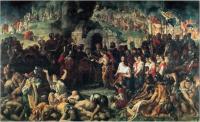
Fig.5. The Marriage of Strongbow and Aoife(1854) by Daniel MacLise (National Gallery of Ireland)
‘The Marriage of Strongbow and Aoife’: metaphor for the Famine
In view of this the achievement of Daniel MacLise in his monumental painting ‘The Marriage of Strongbow and Aoife’ in the National Gallery of Ireland is all the more remarkable (fig.5). Cork-born MacLise was at the height of his career in London in the 1850s, having just secured the commission for the decoration of the newly rebuilt Houses of Parliament in Westminster when he painted this picture. It represents the Union of Britain and Ireland but in a manner which clearly suggests that Ireland, represented here by the beautiful princess and her handmaidens, Irish culture and religion by the ruined church and tower and Irish art, by the old harpist and the ancient Celtic torques and other jewellery worn by the defeated warriors, are being sacrificed to an unappreciative, military conqueror who tramples on a broken high cross as he pledges his word, hardly an auspicious start to a Christian ritual. MacLise would have been well aware that Irish and Norman fought on both sides in the Gaelic-Norman battles of the twelfth century. The emphasis on dead or dying Celtic heroes, while the Normans stand unconcernedly by, therefore, refers to the recent destruction of the native population by the Famine. This, combined with its monumental scale, makes it one of the strongest statement about Anglo-Irish relations in the nineteenth century.
It costs money to make paintings and sculptures. Unless the artist is guaranteed support he or she cannot produce work. For the painter of Irish historical subjects before 1900 it was virtually impossible. It is not surprising that Irish literature flourished instead. As Samuel Beckett put it, ‘when you are thrown in a ditch all you can do is sing’.
Catherine Marshall is Curator of the Collection, Irish Museum of Modern Art, Dublin.
Further reading:
J. Sheehy, The Rediscovery of Ireland’s Past: the Celtic Revival (Dublin and London 1978).
















